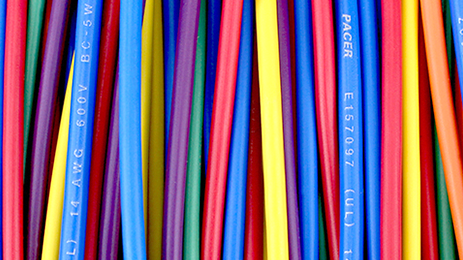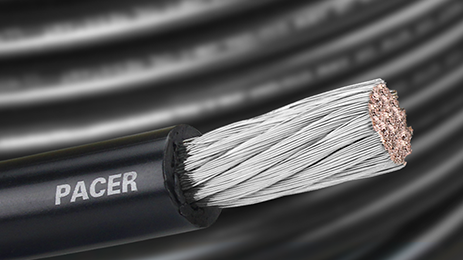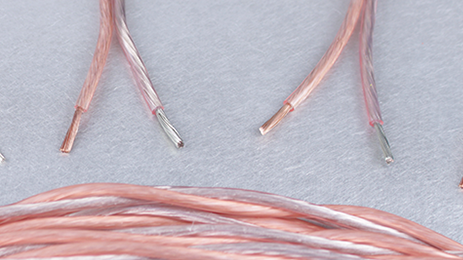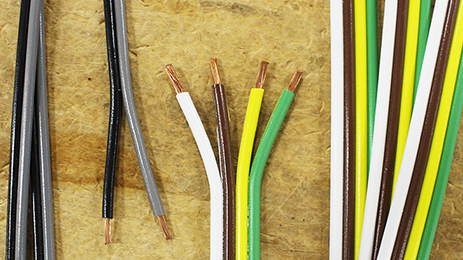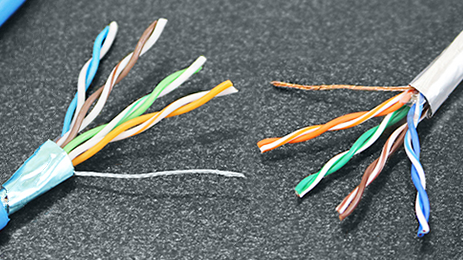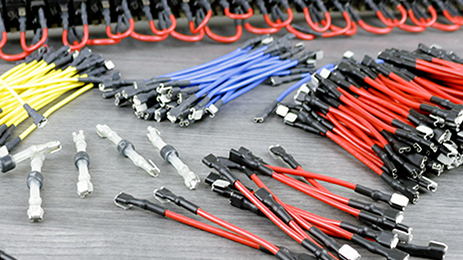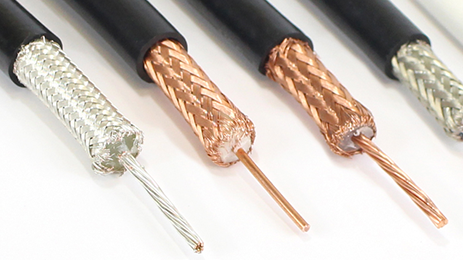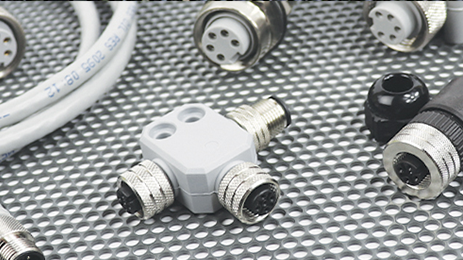Common Names of Various Wires and Cables
Posted by Pacer on 13th Apr 2023
Wire and cable come in a variety of styles and types to meet the needs of various industries. Each of those individual types of wire and cable can be referred to by multiple names. This happens for a variety of reasons, but what's important, is to know the most common names so that whether you hear someone talking about network cable, audio cord, metal braided sleeving, or some other obscure type of wire or cable, you’ll know exactly what they are talking about.
Quick Jump to a Section
Primary Wire
This is the most common type
of wire you’re likely to run into. It’s
an insulated copper wire that can be either solid or stranded. In most cases, but particularly in marine
use, the copper is tinned. This not only resists corrosion but strengthens the
natural properties of the copper. Primary wire is commonly measured from 40
gauge to 4 gauge.
Also known as:
Marine wire, marine grade wire, UL marine wire, SAE marine wire, primary marine wire
Battery Cable
Battery cable is basically larger wire although its a little more complex than that. Knowing the differences between wire and cable can make selecting the correct one for a task easier. Often times battery cable is used to connect batteries to the electrical system. They are also used to connect a generator to a switch, ground, starter, windlass, or any other high amperage equipment. Again, this type of cable is tinned copper to handle the harshest marine conditions.
Also known as:
Marine cable marine grade cable, marine grade battery cable, UL battery cable, SAE battery cable
"They are used to connect a generator to a switch, ground, starter, windlass, or any other high amperage equipment."
This is a bit of a sticky one. You see, duplex refers to 2 conductor cable, triplex refers to 3 conductor cable, and round boat cable refers to the shape of the cable. Usually duplex and triplex are terms used to refer to the flat versions of the cable whereas round boat cable (even when possessing 2 or 3 conductors) is commonly called round boat cable. So the terms are a bit interchangeable and can be used for specific applications.
Also known as:
2 conductor cable, 3 conductor
cable, boat cable, multiconductor boat cable, flat cable / round cable,
round boat cable, duplex boat cable, triplex boat cable
Speaker Wire
Speaker wire is most often used in home theaters, car audio systems, digital audio, speaker installations, and just about anywhere else audio systems are present. It is always two conductor wire with one of those conductors being bare copper while the other is tinned copper. Commonly, this type of wire is found in 12 AWG, 14 AWG, 16 AWG, and 18 AWG although other sizes do exist for specified industries and applications. One notable quality of this speaker wire is that it often carries a translucent insulation.
Also known as:
Speaker cord, audio wire, audio cord,
Multiconductor
This is a very ambiguous term. Multi conductor literally means more than one
conductor and can refer to a range of wire and cable types. Commonly, the term
multi conductor to refer to a type of round boat cable that carries a drain
wire. This comes in two main varieties; shielded multi conductor cable
and unshielded multi conductor cable. The shielded variety is for use in applications where electromagnetic interference (EMI) poses an issue.
Also known as:
Multi-conductor, multi conductor cable, multiconductor marine cable, shielded marine cable, unshielded marine cable
"Commonly, the term multi conductor to refer to a type of round boat cable that carries a drain wire."
Striped Wire
Striped wire is primary marine wire that has a stripe painted onto the outside jacket of the wire itself for easy identification. Striped wire is used when you have a multitude of wires running together. Say you have fifty wires in a single run and only 16 different insulation colors. How can you possible tell them apart? With stripes. It turns 16 color insulations into hundreds of possible combinations.
Also known as:
Striped electrical wire, striped marine wire, wire striping
Striped wire is used in a range of industries including the marine industry, the RV industry, the automotive industry, the database industry, the power management industry, and a multitude of others. Not many types of wire and cable are found in such a diverse range of industries. You can find striped wire in golf carts, solar equipment, and in communication equipment. It makes sense that this type of wire is so prevalent. Striped wire is flexible, durable, easy to install and designed to last making it the ideal choice for a range of applications.
Zip Cord
Zip cord is meant for applications where you will need wires that have
multiple conductors that are color coded and parallel bonded. Parallel bonded indicates that
the wires are attached side by side. In this case each wire has a different color
insulation. This makes distinguishing each wire at each point of connection
easier. Most commonly, zip cord will have two, three or four conductors. This
type of wire is used with low voltage lights and trailer lights where multiple
conductors need to be routed quickly and easily.
Also known as:
Bonded wire, parallel cord,
You may have noticed! Speaker wire is a type of zip cord. The biggest difference being that speaker wire often has a translucent insulation and one bare copper conductor. Their uses are so different that they are considered an entirely separate type of wire.
CAT Cable
CAT cable is a used to connect computer networks and is commonly referred to as ethernet cable. You’ve likely seen these cables in your own home or workplace. You will often find that they carry a grey, blue, or yellow jacket. They are the type of cable used to connect modems and PCs. CAT cable is available in a wide variety of styles and types to meet the demands of various industries. The most common forms of CAT cable are; CAT5, CAT5E, and CAT6.
Also known as:
Category cable, LAN, network cable, ethernet cable
Wire Jumpers
Wire jumpers are pre-made sections of wire used to connect the back of
an electrical panel or piece of equipment. When wiring the back of a panel, you’ll
want short runs of wire that offer the same protection as a longer run would. Their
intent is to make the process of wiring up the back of a panel or similar piece
of equipment an easy one. They turn difficult jobs into simple plug-and-play.
Also known as:
Panel switch jumpers, panel jumpers, panel connectors
"When wiring the back of a panel, you’ll want short runs of wire that offer the same protection as a longer run would."
Bus Bar Wire

Bus bar wire is a type of non-insulated wire commonly used as feeder lines to or from a bus bar. One of the main advantages of this solid tinned copper wire is that it will hold its shape. This means that you can shape a piece of busbar wire around an obstruction without any risk of damage to the bus bar wire itself. This is literally one of the easiest wires to use. It is important to note that the lack of insulation means you must be careful when using this type of wire.
Also known as:
Non-insulated wire, hook up wire (not to be confused with hook-up wire mentioned above)
Coax Cable
Coaxial cable has an inner conductor that can be either solid or stranded and is used to transmit a signal. The outer shield serves to both trap inner
EMF (electromagnetic fields) and prevent interference from external EMF. If you
have ever hooked up cable television, you probably recognize this cable. Coaxial cable is often used in the communication industry.
Also known as:
Coaxial cable, coax, coaxial, LMR (Land Mobile Radio)
DeviceNet Cable
DeviceNet is known for using the Common Industrial Protocol over a
Controller Area Network (CAN) media layer. This means that DeviceNet is a
network system cable that can interconnect
control devices for data exchange. It is often utilized in the automation
industry. In essence, the network allows instruments to work together since
they share data.
Also known as:
NMEA2000


